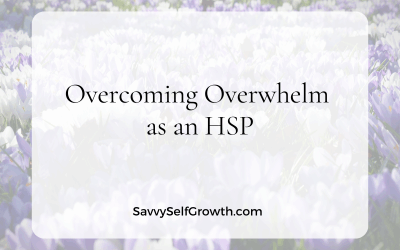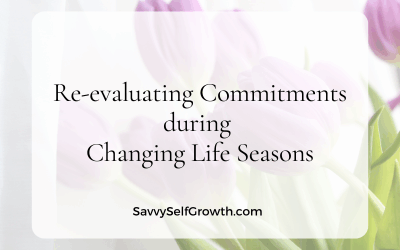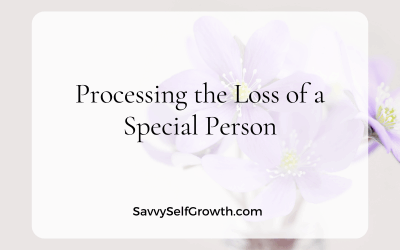I talked a while ago about something we call “self-sabotage” and I mentioned I don’t like the term. My perspective is that we simply haven’t given a voice to all the parts of us that have something to say about a dream or goal.
Watch the video here on FB or on Youtube if you haven’t seen it yet, then the rest of the article might make more sense, too.
In this article, I want to share some ideas on what to do about “self-sabotage”.

Once you realise you have a dream that you’re ‘sabotaging’ (in other words, either procrastinating or acting in ways that will never get you to your goal or dream):
- Draw a mindmap with your goal in the middle
- Then, draw branches with all the thoughts and feelings that come up to the contrary
- One way to invite them out is to say your goal to yourself and then follow it up with “YES BUT….” — and complete the sentence.
Now is not the time for judging, ignoring, or suppressing any of these thoughts or feelings. It’s time to let all of them have a voice and be heard… if you don’t, they will simply brew under the surface and cause apparent ‘self-sabotage’.
To help you towards your goal, you need to hear all of them.
A self-sabotage example
Say the goal is to write a book. Say out loud: “I have a burning desire to write a book.”
And then say “YES BUT…”, and write what comes after that. It might be things like:
- No one will want to read it
- Who am I to write a book?
- Who will buy it anyway?
- There are so many books out already
- I might need to talk about my book (a book launch) and I don’t like the spotlight
- I don’t know when I will write, I’m short on time already!
- I’ll never make money with this book anyway
- Where will I find a publisher?
- I’m not good enough
- This book might make me famous and I’m not ready for that
- What if people need my attention too much?
- If I put myself “out there” with a book, I might need to keep doing that and I don’t want to be available all the time
There’s more!
- There will be too many demands on me
- People will criticize my writing style, and I’d feel embarrassed and rejected
- People will judge what I have to say — and I fear that
- I’m scared of public humiliation
- Not everyone is going to like it
- It suddenly sounds like so much effort
- I don’t even know what to write about
- I have so many ideas of what to write and I don’t know which one to choose …. it’s easier not to write at all
- What if I start writing and I run out of things to say?
If even one or more of these are going on under the surface, it’s going to stop or at least delay us from taking effective action.
Imagine if 5 or 6 of them are brewing deep under the surface every time you think “I really want to start writing….”. Is it any wonder that you don’t? It’s about safety! Our brain is simply trying to protect us from possible harm.
What happens when we don’t give all the voices in our head (they’re actually in our subconscious) a chance to speak?
We keep pushing them down into the shadows, where it’s dark, where they can’t get air.

What happens to places that don’t get any light or air?
It gets a bit smelly, dank, moldy, and stuffy… and who wants to go down there in the basement to confront all that stuff? It can feel pretty scary too.
Thing is — if we don’t, the basement gets smellier, colder, moldier, more unpleasant with every passing day.
A clean-up every now and again is a healthy thing, even though we may not want to leap out of bed to do it!
That’s exactly what’s needed with all the conflicting messages from our subconscious.
Give them airtime — let them into the light where we can see and hear what they’re telling us. When we validate them (they’re there for a reason after all), these parts of us will be far more likely to cooperate — because we acknowledge each one in a kind way.
Getting them all out on paper is the first and very important step. If we don’t do that, they are going to run the show. They’re going to keep stopping us from writing {or, insert your dream here}.
How do I know this?
Guess whose long list of “YES BUTS” are above? And guess who had to overcome them? Yep, this is what I faced when I wanted to write my first book. I made that list in 2012.
For some of these ‘reasons not to write’, there are practical considerations, and there are strategies we can follow. Most of them, however, are emotional reasons that we can neutralize or bring down the intensity of, with a tool like EFT. (It’s my favourite because it’s something that everyone can learn and use).
A method to turn self-sabotage around
If you think that you’re ‘self-sabotaging’ a dream, try this:
- Write it down.
- Write a mindmap or list of every thought and feeling to the contrary.
- Pick one at a time (the one that pulls you the most, it really doesn’t matter which order you do this one).
- Do 5 or 10 minutes of tapping every single day for a few days, focusing on that feeling or thought while you tap.
- You’ll notice your thoughts or feelings around this one issue start to shift.
- With some forms of EFT, we need to be specific to be terrific. So if you’re not shifting around the ‘yes but’, you might be tapping too generally, or you haven’t found the root of this issue. Another form of EFT (IEP or Intention Tapping) might be really useful in this case.
- If you’re not making headway, find a practitioner you feel safe with, to help you find the roots and clear out that cold, dark basement.
Work in the same way with each of your thoughts to the contrary of your goal. Some of them are similar, so you won’t need to work with every single one. Just pick a line from your list and do a bit of tapping consistently.
“Rome” applies to EFT tapping, too!
Just like with exercise, we don’t expect to be fit after one or two exercise sessions. It’s a process of getting fit (and even fitter) the more we exercise.
Tapping for what’s in the way of our goal works the same way.
A little bit every day to make progress is often more effective than one long session once a month.
Rome was not built in a day, and those subconscious fears did not appear in a day either. We’re allowed to take a little time to uncover and clear them — slowly, gently, and sustainably.
When we shift the emotional/mindset stuff, the action can start happening spontaneously with less effort and no force. When there’s mindset stuff in the way of action, it feels like an uphill battle.
Start with mindset. Sometimes we can ‘talk ourselves’ into starting something. When there’s too much going on under the surface (as in the example above), it’s going to be very hard. So reduce the resistance first by listening to all the ‘yes buts’ — and action will flow in very exciting, natural ways.
And then remember:
- It’s a process, and maybe it needs a bit of patience. Rome and all that!
- Keep working at reducing the fears and thoughts to the contrary.
- Keep taking action, however small it might be.
- Be kind to yourself about all your fears and concerns. We’re all just human, we don’t want to feel the humiliation of criticism or rejection, and we’ve all had experiences that we’d like to avoid again in the future.
- There’s nothing wrong with you if you have many fears. Maybe you had a rough start in life, and many experiences that taught you to feel unsafe. That’s okay. This process will work, too, and you just may need to have more kindness, compassion, and patience, and probably ask for help along the way.
- If you clear a bunch of ‘yes buts’ for one dream, guess what? They’re usually making a positive impact on the ‘yes buts’ for other areas in your life too. So get tapping!




